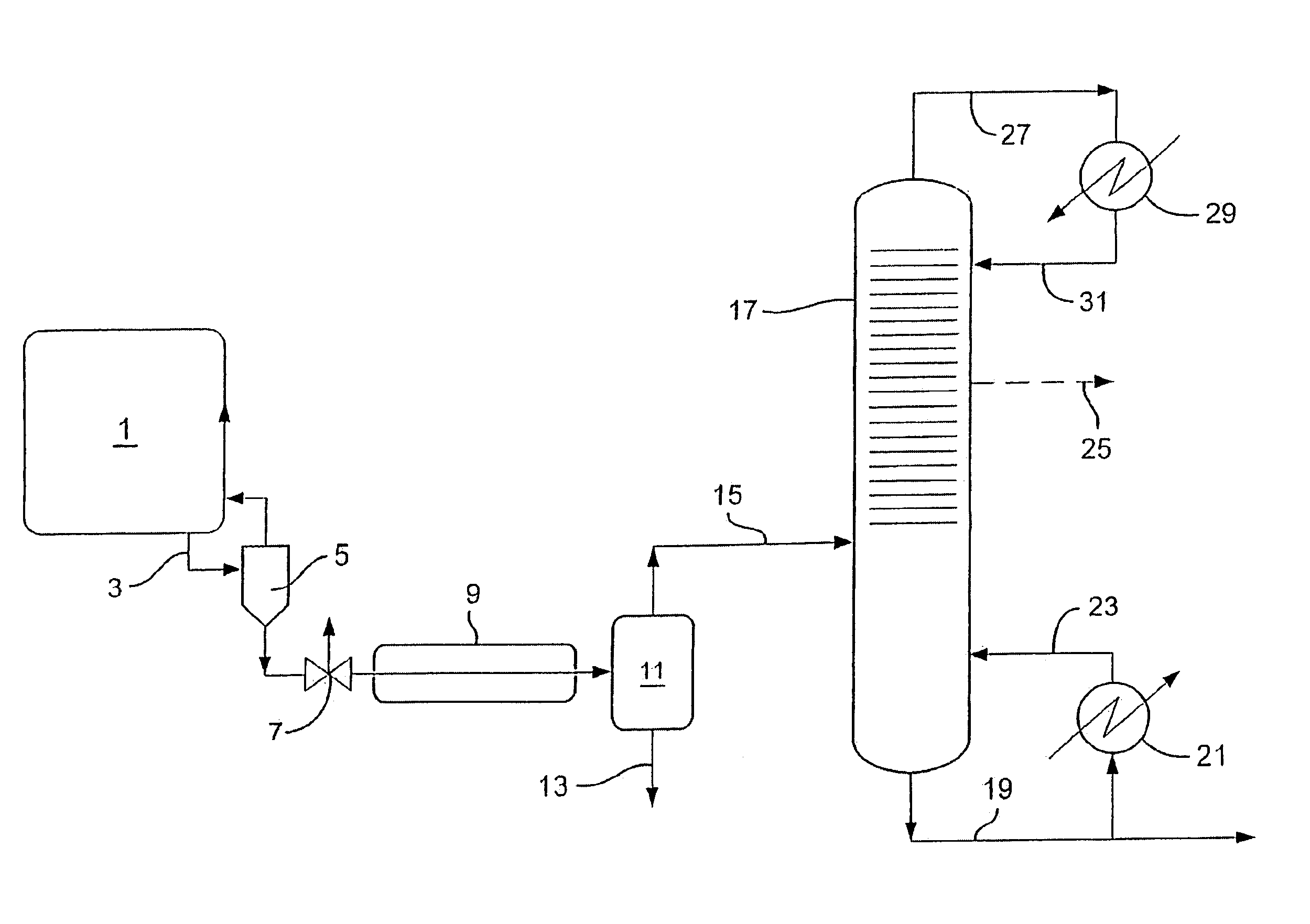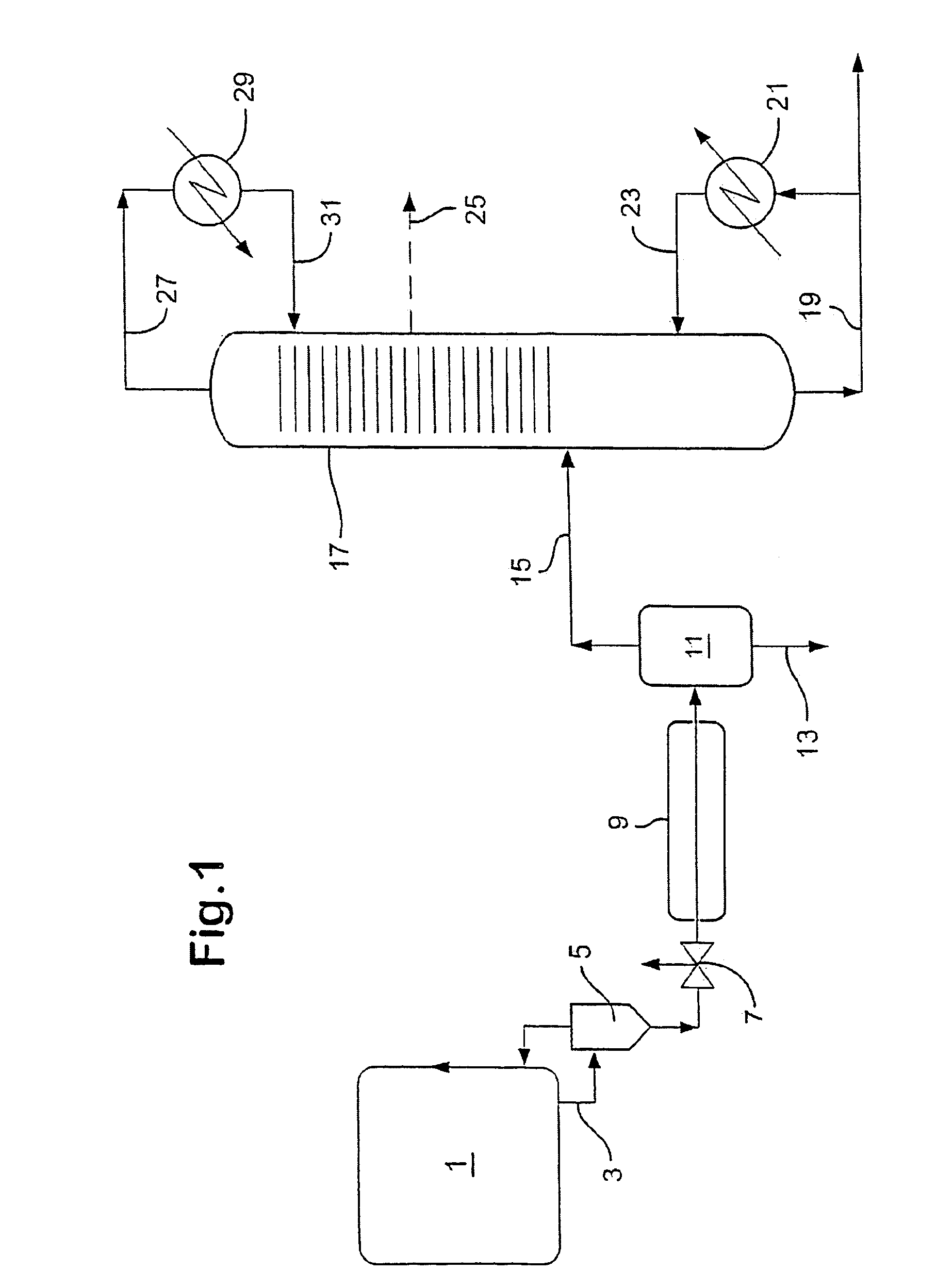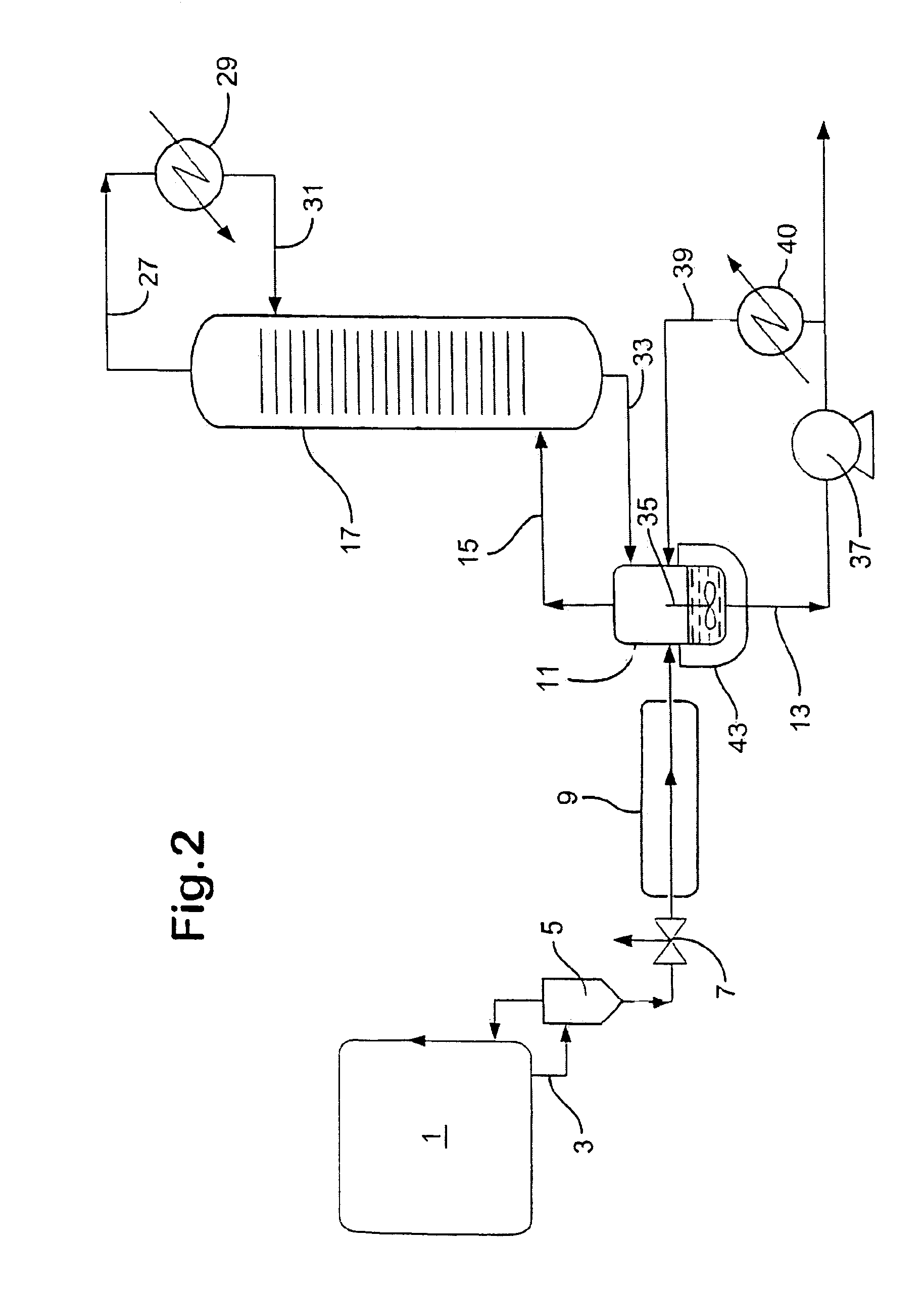Polymerisation process
a polymerisation process and polymerization technology, applied in chemical/physical/physical/physical-chemical processes, chemical apparatus and processes, chemical/physical/physical-chemical stationary reactors, etc., can solve the problems of inability to pump slurry, and inability to achieve high molecular weight, etc., to achieve efficient separation operation, avoid installation of stand-by treatment facilities, and reduce the effect of recompression of the polymer stream
- Summary
- Abstract
- Description
- Claims
- Application Information
AI Technical Summary
Benefits of technology
Problems solved by technology
Method used
Image
Examples
example
[0071]In one specific example of the invention in which a fractionator is employed between two reactors in a bimodal dual-reactor system such as described in FIG. 2, the fractionator is fed with a stream comprising isobutane, ethylene, hydrogen, hexene-1 and polyethylene issuing from a first polymerisation reactor. This stream is first concentrated in a hydrocyclone, after which it is passed through a slurry heater before entering the base of the fractionator.
[0072]In this particular example, a flow rate of 10090 kg / h of polyethylene and 9685 kg / h hydrocarbon enters the base of the fractionator. The hydrocarbon in this case comprises mainly isobutane but also contains about 3.22 kg / h of hydrogen, 116 kg / h ethylene, about 10 kg / h of solid polymer which contains some active catalyst, and minor amounts of other components.
[0073]As the stream enters the base of the fractionator, the hydrocarbon portion is about 75% vapour. Upon entering the base, the residual liquid and almost all of th...
PUM
| Property | Measurement | Unit |
|---|---|---|
| particle size | aaaaa | aaaaa |
| particle size | aaaaa | aaaaa |
| particle size | aaaaa | aaaaa |
Abstract
Description
Claims
Application Information
 Login to View More
Login to View More - R&D
- Intellectual Property
- Life Sciences
- Materials
- Tech Scout
- Unparalleled Data Quality
- Higher Quality Content
- 60% Fewer Hallucinations
Browse by: Latest US Patents, China's latest patents, Technical Efficacy Thesaurus, Application Domain, Technology Topic, Popular Technical Reports.
© 2025 PatSnap. All rights reserved.Legal|Privacy policy|Modern Slavery Act Transparency Statement|Sitemap|About US| Contact US: help@patsnap.com



